Clicking on thumbnail opens image in new screen
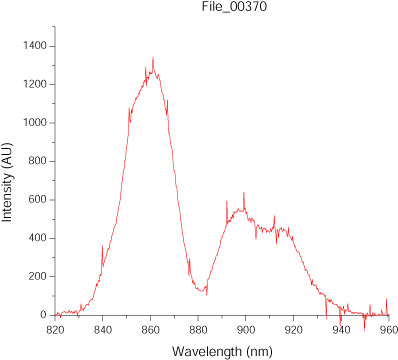
Measured Spectrum of FEL output during VISA IB operating conditions.
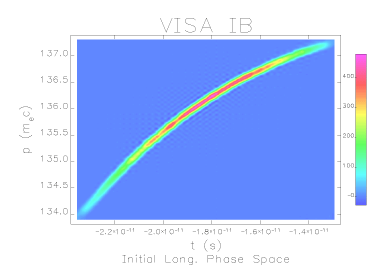
Initial Long. Phase Space (ELEGANT).
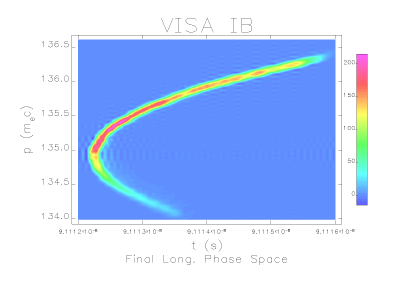
Final Long. Phase Space (ELEGANT).
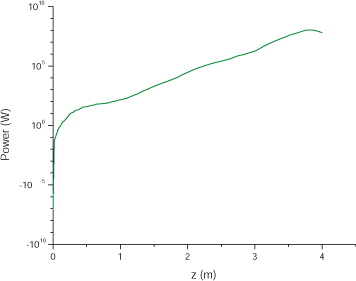
FEL Gain Curve (Genesis).
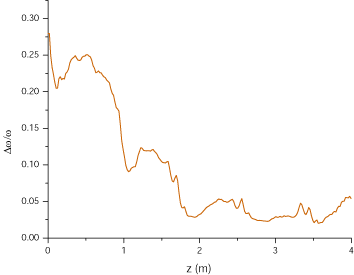
FEL Bandwidth along the VISA undulator (Genesis).
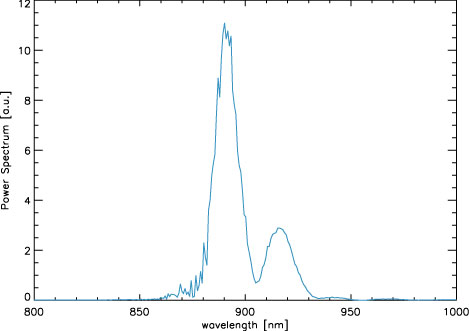
FEL Spectrum 01 (Genesis).

FEL Spectrum 02 (Genesis)
VISA II Experiment (continued)
Large Bandwidth Regime Experiment (VISA I-B)
The following operating conditions are currently being studied (the so-called VISA I-B experiment).
An interesting area of FEL operations that is currently being studied is the large, FEL bandwidth regime. The same lattice is used as for the initial VISA measurements, however an unexplained behavior is exhibited. Namely, the bandwidth of the FEL spectrum is on the order of 10%. Also, the spectrum exhibits a "double-hump" structure.
Data
This is a characteristic plot of the FEL spectrum when VISA is run is this regime (VISA I-B)

Start-to-End Simulations
The same techniques for start-to-end analysis are employed for the VISA I-B case. UCLA PARMELA is used for modeling the cathode. Elegant is used for lattice calculations along the transport. Genesis 1.3 is used for FEL simulations in the undulator.
| Transport Calculations |

Fig. 1: Initial Longitudinal Phase Space for VISA IB operating conditions.
The initial phase space after acceleration through the linacs has a clear energy chirp. This graph was produced using ELEGANT.
|

Fig. 2: Final Longitudinal Phase Space for VISA IB operating conditions.
This is the final phase space before injection into the undulator. There is approximately 60% transmission, mostly due to collimation from the high energy slit along the dispersive line (or F-line).This graph was produced using ELEGANT.
|
| Undulator Studies (using GENESIS 1.3) |

Fig. 3: Saturation is evident under these operating conditions.
|

Fig. 4: Output spectrum is similar in structure to the actual data.
|

Fig. 5: FEL Bandwidth as a function of longitudinal position along undulator.
|






